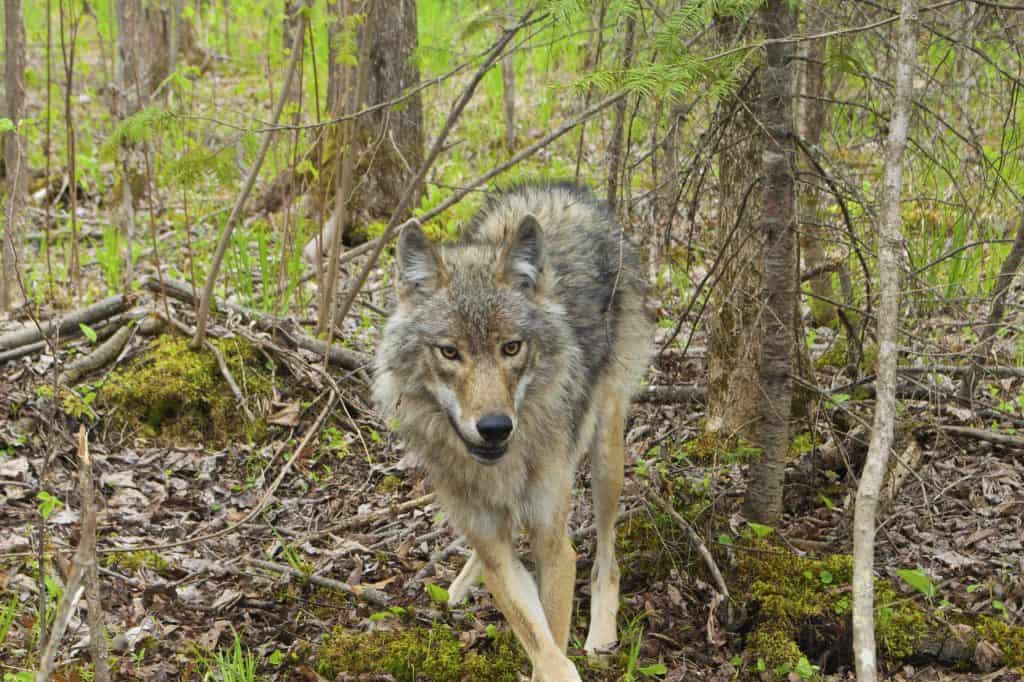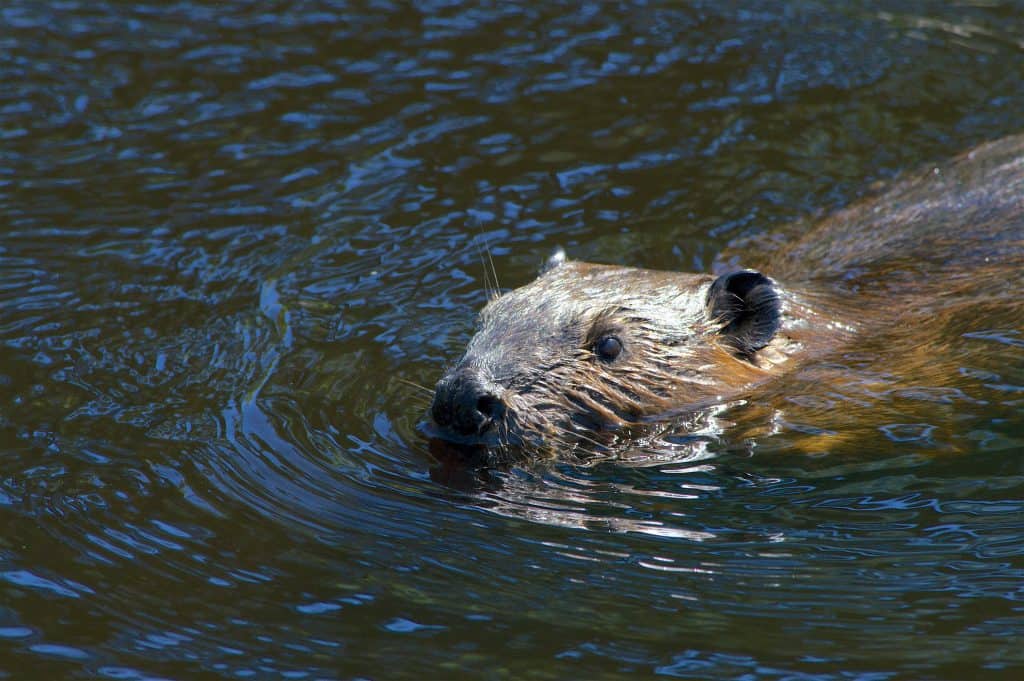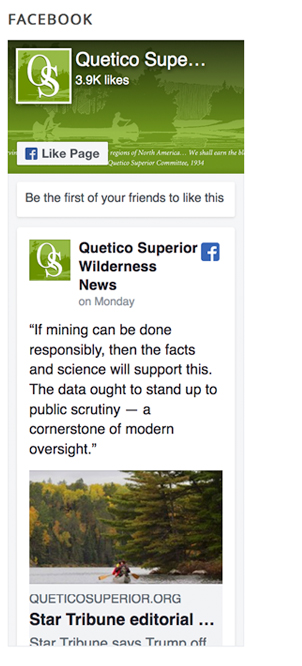

Reframing the predation behavior of a charismatic carnivore:
how do wolves hunt beavers?
By Tom Gable
How do you catch a semi-aquatic rodent that spends very little time on land? Turns out, with patience and a lot of waiting.
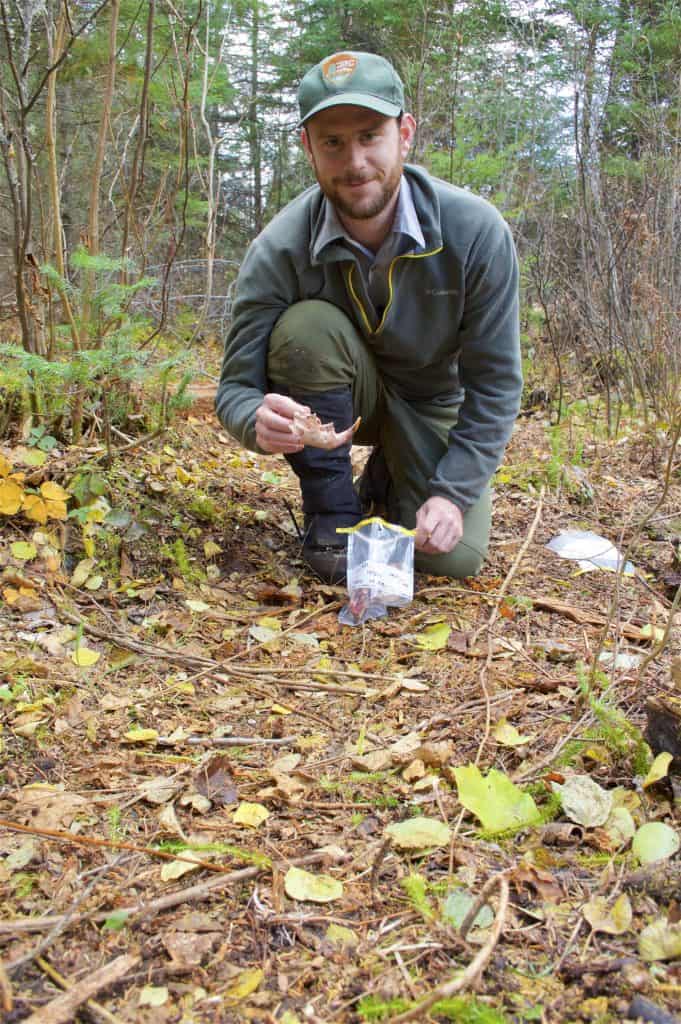
Biologists have known for a long time that beavers are important prey for wolves throughout the boreal ecosystem in North America, Europe, and Asia but studying wolf-beaver interactions has proven difficult. This is largely because wolves and beavers primarily interact in densely forested habitats so it is practically impossible to observe encounters between the two.
Voyageurs National Park is a haven for beavers and wolves, with the park boasting some of the highest beaver and wolf densities in North America. Unsurprisingly, beavers are a large part of the diets of wolves during the summer (composing up to 42% of wolf diets during this time) and wolves are substantial predators of beavers during this time.
So, in 2015, we, a collaborative group of researchers from Voyageurs National Park, Northern Michigan University, and the University of Minnesota, started the Voyageurs Wolf Project with the intention of understanding this important, but poorly understood, predator-prey relationship. One of the big questions we wanted to answer was how do wolves actually catch and kill beavers?
When we started this work, there were no documented observations of wolves hunting beavers so no one really knew. Many biologists had speculated about how wolves might go about catching a beaver but there was little evidence to support their ideas.
Fortunately, recent advances in GPS-technology provided us a new option for studying wolf predation of beavers.
Since 2015, we have been putting GPS-collars on wolves in Voyageurs that take locations every 20 minutes. We then visit every place each wolf has remained relatively stationary for more than 20 minutes to determine what the wolf was doing in that area (e.g., was it resting or making a kill?). Doing this gives us an in-depth understanding of how and where each wolf spends time.
As we started visiting where the wolves had been, we quickly noticed a pattern. Wolves were spending substantial periods of time bedding down next to areas where beavers had been active on land (e.g., near a beaver dam, or by trails beavers had made to cut trees). In addition to these observations, we also found where wolves were successfully killing beavers. We carefully documented these observations and took detailed notes of our findings.
With all of this information, we figured it out—wolves were using an ambush hunting strategy to catch beavers.
Now, you might be thinking “What is the big deal? How else would a wolf catch a beaver?”.
The reason this finding is so interesting is that wolves have not been considered ambush predators.
Wolves have been primarily thought of as “cursorial” predators meaning that they catch and kill prey by outrunning and outlasting it. Think of a pack of wolves chasing a deer or moose. There are a few anecdotal observations in the scientific literature where biologists thought wolves were using ambush hunting strategies, but such claims have been met with skepticism.
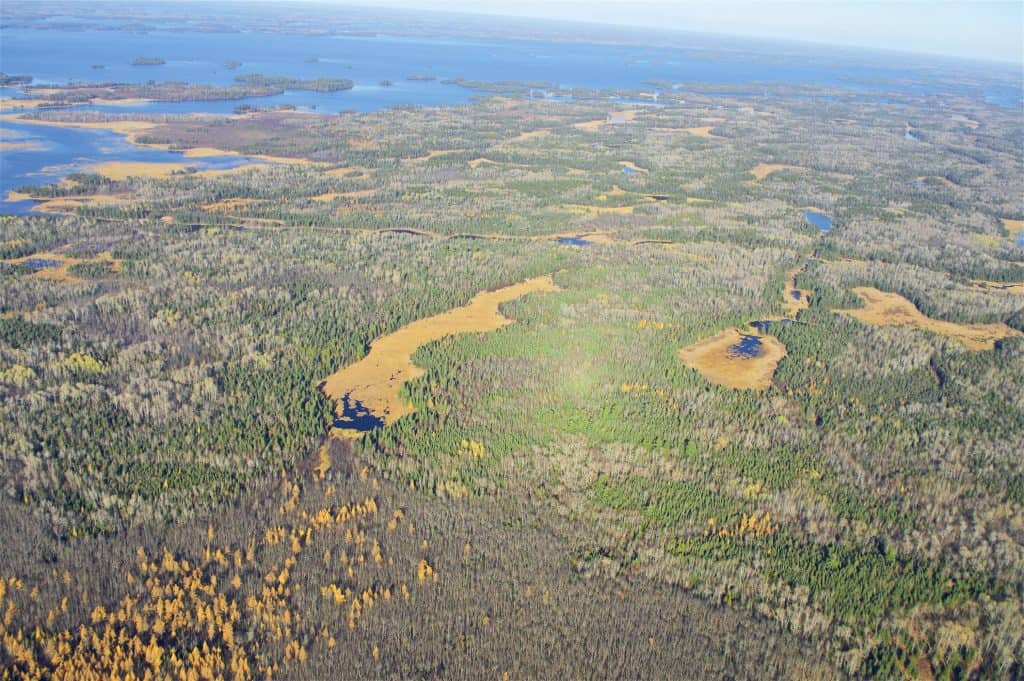
Our findings, which have been published in the scientific journals PLOS One and Ecosphere, are some of the first scientific research to rigorously demonstrate that wolves can use ambush hunting strategies to kill prey. Further, our work shows that wolves are able to switch between hunting strategies depending on the prey they are trying to kill (cursorial strategies to hunt deer and moose, and ambush strategies to hunt beavers in Voyageurs). Having the ability to switch between hunting strategies is unique for large predators and, in our opinion, a testament to the intelligence wolves posess.
Yet, there is considerably more to learn about how wolves hunt beavers, and then also how beavers avoid encountering wolves when on land. For example, what time of day do wolves hunt beavers, and does this match up with when beavers are most active on land? Or, are beavers most active on land during specific times to avoid periods when wolves are trying to ambush them?
The Voyageurs Wolf Project, which is primarily funded by Voyageurs National Park, the Minnesota Environment and Natural Resources Trust Fund, and the University of Minnesota, is going to continue investigating these questions and hopes to answer them in the next few years. In doing so, we aim to further shed light on and reframe our understanding of the predation behavior of one of the most charismatic large carnivores in the world.
For more information on the Voyageurs Wolf Project, check out the Facebook page for regular updates and findings.
Find out more about Voyageurs National Park.


